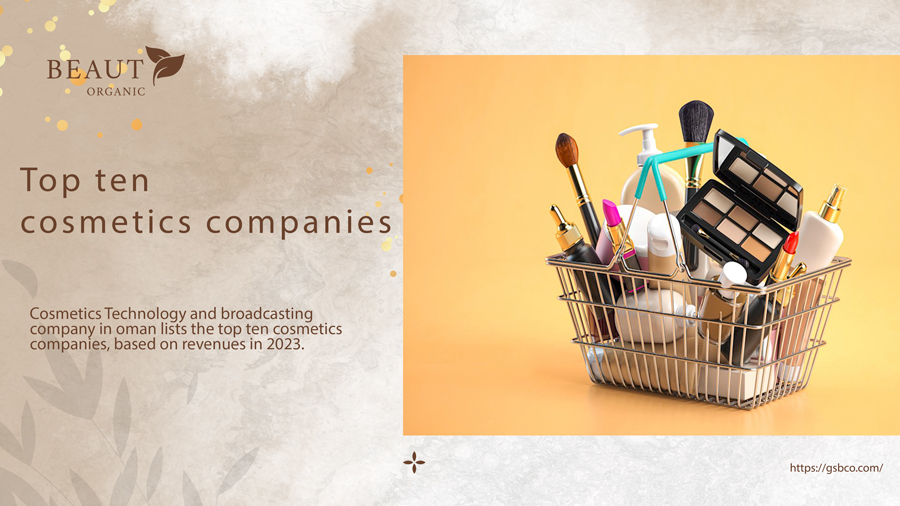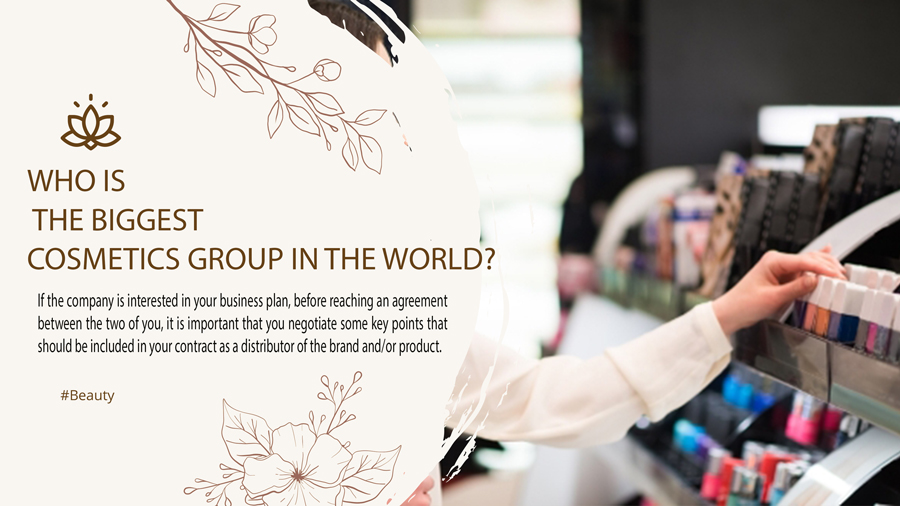Who is the biggest cosmetics group in the world?
The US is home to four of the ten biggest cosmetics companies in the world, while Japan and France have two each. L’Oréal remains the world’s largest cosmetics company, followed by Unilever, and P&G. Cosmetics Technology and broadcasting company in oman lists the top ten cosmetics companies, based on revenues in 2023.
World’s biggest cosmetics companies: Top ten by revenueThe US is home to four of the ten biggest cosmetics companies in the world while Japan and France each have two. L’Oréal remains the world’s largest cosmetics company, followed by Unilever, and P&G. Cosmetics Technology lists the top ten cosmetics companies, based on revenues in 2023.
World’s biggest cosmetics companies: Top ten by revenue
1. L’Oréal
2. Unilever
3. P&G
4. Estée Lauder
5. Shiseido
6. Beiersdorf
7. LVMH
8. Kao
9. Coty
10. Johnson & Johnson
1. L’Oréal
Top ten cosmetics companies
1.L’Oréal
L’Oréal is the world’s largest cosmetics group. Image courtesy of Arthur Weidmann. French cosmetics company L’Oréal achieved €27.99bn ($33.93bn) in revenues from group sales in 2020, a 6.29% decline from €29.87m ($36.21m) in 2019. The company’s Consumer Products division contributed approximately 41.8% of the revenues while its L’Oréal Luxe division accounted for 36.33% of the sales. Approximately 22% of the revenue came from the Professional Products and Active Cosmetics businesses.
The sharp decline in profits was triggered by the supply chain disruptions due to the Covid-19 pandemic. The personal care giant was back on the growth track with a 4.8% like-for-like acceleration in sales in the fourth quarter of 2020. The widespread closure of points-of-sale was offset by L’Oréal’s strong performance in digital and e-commerce platforms, with the e-commerce business witnessing a 62% increase in sales and accounting for 26.6% of the entire sales in 2020.
L’Oréal is the world’s largest cosmetics group with a presence in 150 countries. The company creates and develops cosmetic products across skincare, haircare, make-up and perfumes. It has 36 brands in its portfolio, including L’Oréal Paris, Vichy, Garnier, Yves Saint Laurent Beauté, Giorgio Armani Beauty, Ralph Lauren, Maybelline New York, and Biotherm.
2. Unilever
World’s Top ten cosmetics companies
Unilever offers products across different categories, including beauty and personal care, household cleaning products, and toothpaste. Image courtesy of Unilever.
British multinational consumer goods company Unilever’s revenues fell 2.4% year-on-year to €50.7bn ($60.99bn) in 2020. The company’s Beauty & Personal Care segment registered the highest revenues among its various business units. The segment reported €21.1bn ($25.38bn) in revenue, which is approximately 41.61% of the total turnover. Approximately 20.71% of Unilever’s turnover came from the Home Care division, while the Foods & Refreshment business contributed the remaining 37.67%.
Strict lockdowns in India and China impacted the market environment in the first half of 2020, however, the relaxation of Covid-19 lockdowns and restrictions in the two countries lead the company to return to the growth path. The company is experiencing rising demand for the consumption of food products at home in the wake of the pandemic while the sale of beauty and personal care products, except hygiene products, was affected by the reduced focus on personal grooming.
With an operational footprint in more than 190 countries, Unilever supplies products such as food, confections, soft drinks, tea, ice cream, energy drinks, coffee, laundry and household cleaning products, beauty and personal care, toothpaste, and healthcare products.

3. P&G
Top ten cosmetics firms
P&G’s Olay brand has an approximately 6% share of the global skincare market. Image courtesy of Olay Body.
Procter & Gamble (P&G) saw a 4.8% increase in net sales from $67.68bn in 2019 to $70.95bn in 2020, mainly driven by a 10% rise in net sales of its Health Care business. Combined revenues from Beauty and Grooming segments stood at $19.41bn, a 1.72% year-on-year increase. The Beauty segment’s net sales rose 4% year-on-year to $13.35bn, while earnings from sales of Grooming segment products fell by 2% to $6.06bn. The Beauty and Grooming segments together contributed to 28% of the company’s net sales in 2020.
The North America region was the biggest market accounting for 47% of the revenue, followed by Europe (22%), Asia Pacific (10%), Greater China (9%), Latin America (6%), and India, Middle East, and Africa (IMEA, 6%).
Procter & Gamble operates through Fabric & Home Care, Beauty, Health Care, Grooming, as well as Baby, Feminine & Family Care segments. Major brands of the company include Head & Shoulders, Ariel, Old Spice, Pantene, Safeguard, Olay, Tide, Vicks, and Gain.
4. Estée Lauder
Estée Lauder’s skincare category grew by 12.68%, while the Makeup category fell by 18%. Image courtesy of The Estée Lauder Companies Inc.
Temporary retail store closures due to the coronavirus pandemic triggered a 4% year-on-year fall in Estée Lauder’s net sales to $14.29bn. It was partially offset by an increase in sales through online channels. The company’s revenues were also boosted by net sales of perfumes and cosmetics maker Have&Be, which was acquired by Estée Lauder in December 2019. The company implemented digital strategies to enhance sales by tapping online customer demand during the second half of 2020.
Estée Lauder’s skincare products category showed resilience, recording a 12.68% growth to achieve net sales of $7.38bn while its makeup, haircare, and fragrance categories declined 18%, 12%, and 13%, respectively. Estée Lauder’s earnings in the Americas and Europe, the Middle East & Africa decreased year-on-year by 20% and 3%, respectively. The Asia Pacific region, however, saw a 15% increase in net sales, with a particularly strong performance in Mainland China.
The company announced 1,500 to 2,000 job cuts or approximately 3% of its global workforce, affecting point of sale workers and associated support staff. It also decided to close approximately 10% to 15% of its freestanding stores across the world.
Estée Lauder’s portfolio includes more than 25 brands that are available in 150 countries. The beauty products firm has more than 48,000 employees worldwide.
5. Shiseido
Shiseido’s net sales fell by 18.6% year-on-year in 2020. Image courtesy of Wpcpey. One of the oldest cosmetics companies in the world, Japanese multinational personal care company Shiseido witnessed an 18.6% year-on-year fall in net sales to JPY920.88bn ($8.73bn). Its Japan Business segment accounted for 32.9% of the total sales while the China Business contributed 25.9%, with the remaining revenues coming from Americas (9.9%), EMEA (10.3%), Travel Retail (10.7%), Asia Pacific (6.4%), Professional (1.4%) and Other (2.8%) business.
The company is investing in the premium skin beauty category and digital platforms to enhance growth. Its net sales are projected to increase by 19% JPY1.1tn ($10.43bn) in 2021, primarily driven by a 33% growth in China and 27% growth in the Americas.
Shiseido has five brand categories, namely Prestige, Cosmetics, Personal Care, Fragrance, and Professional. It announced a plan in February 2021 to transfer its Personal Care business to a newly formed company from 1 July 2021.
6. Beiersdorf
biggest cosmetics companies
Nivea’s net sales stood at $4.79bn in 2020. Image courtesy of Federica Piersimoni.
German multinational personal care products company Beiersdorf reported €5.7bn ($6.91bn) in revenue in 2020, a 9.1% decline compared with 2019.
The sales performance was mainly affected by the Covid-19 pandemic. The company, however, increased its market share in emerging markets and recorded higher sales growth in Brazil. The company’s main brand Nivea recorded a 10.8% drop in sales to €3.95bn ($4.79bn) while sales of the Derma business unit grew by 5.2%, driven by strong double-digit sales growth in South America and the US.
Beiersdorf owns several brands such as Nivea, La Prairie, Eucerin, Labello, Hidrofugal, Gammon, Coppertone, Chaul, and Maestro in the consumer business segment. Its other business segment, tesa, is involved in self-adhesive systems and solutions.

7. LVMH
World’s biggest cosmetics companies
LVMH’s new Bvlgari Allegra fragrance collection was launched in January 2021. Image courtesy of Bvlgari.
LVMH, a luxury goods company based in France, reported €44.65bn ($54.26bn) in revenue, a 17% year-on-year decrease from €53.67bn ($65.23bn) in 2019. Its Perfumes & Cosmetics business accounted for 11.7% of the total sales revenues. Revenues from Perfumes & Cosmetics witnessed a 23% decline to €5.24bn ($6.36bn) while Watches & Jewelry, Selective Retailing, Fashion & Leather Goods, and Wines & Spirits fell by 24%, 31%, 5%, and 15% year-on-year, respectively.
The Perfumes & Cosmetics brands, however, returned to a growth trajectory in the second half of 2020, driven by demand for skincare and a surge in online sales, especially in Asia. LVMH’s Christian Dior brand recorded improved performance in the second half, due to the success of Miss Dior Roses N’Roses and J’adore Infinissime perfumes, as well as Rouge Dior make-up.
One of the world’s largest luxury goods conglomerates, LVMH owns multiple brands, including Louis Vuitton, Givenchy, Tag Heuer, Bvlgari, Tiffany & Co., Acqua Di Parma, Marc Jacobs Beauty, and Louis Vuitton.
8. Kao
Top ten cosmetics companies in the world
Kao launched a new serum, named SOFINA iP Interlink Serum Pore-Refining Moisture to condition skin in February 2021. Image courtesy of Kao Corporation.
Japanese chemical and cosmetics company Kao’s sales revenues decreased by 8% to JPY1.38tn ($13.14bn). Its Cosmetics and Skin Care & Hair Care businesses recorded a combined revenue of JPY543bn ($5.17bn).
The Cosmetics division fell by 22.4% year-on-year, mainly affected by reduced demand and temporary store closures. The Skin Care & Hair Care business declined by 9.3%, although the demand for hand soaps, sanitisers, and other hygiene products increased.
The company expects to achieve a 3.5% increase in revenues in 2021 over the previous year. Its operating income is projected to increase by 0.8% to JPY177bn ($1.68bn).
Kao operates through two business segments, namely consumer products and chemicals. Divisions in consumer products include Cosmetics, Human Health Care, Skin Care & Hair Care, and Fabric and Home Care.
9. Coty
Top ten cosmetics companies in the world
Coty renewed its fragrance licence partnership with Lacoste in July 2019. Image courtesy of Coty Inc.
Cosmetic, skin, body care, fragrance and hair brands company Coty achieved $4.71bn in net revenues, a 25% year-on-year decrease. It reported 38% of the revenues from the Americas, 49% from EMEA, and 12% from the Asia Pacific.
The company’s Consumer Beauty business, which fell by 29% year-on-year, contributed 44.79% of the total revenues. The Luxury business recorded $2.6bn, a 21% decline year-on-year, and accounted for 55.2% of the total revenue.
Headquartered in New York, US, Coty offers consumers brands such as CoverGirl, Adidas body care, Max Factor, Nautica, and Rimmel. The company has licensing agreements with luxury brands such as Hugo Boss, Burberry, Chloé, Calvin Klein, Gucci and Davidoff. Its products are available in more than 150 countries.
10. Johnson & Johnson
Johnson & Johnson offers pharmaceutical and consumer health products, as well as medical devices.
Johnson & Johnson’s net sales remained nearly flat at $82.58bn in 2020. The company’s Skin Health/Beauty segment in the Consumer Health business earned $4.45bn, of which 52.8% was contributed by the US market alone while the remaining revenues came from the rest of the world. The segment saw a 3.1% year-on-year decline over 2019. Approximately 55.18% of the revenues came from the Pharmaceutical division while Consumer Health and Medical Devices divisions accounted for 17.01% and 27.79%, respectively.
Founded in 1886, Johnson & Johnson is a multinational company with more than 130,000 employees. Its skincare brands include Neutrogena, Aveeno, NeoStrata, Dabao, and Dr.Ci:Labo; and haircare brands include Maui Moisture and OGX.






Leave a Reply
Want to join the discussion?Feel free to contribute!